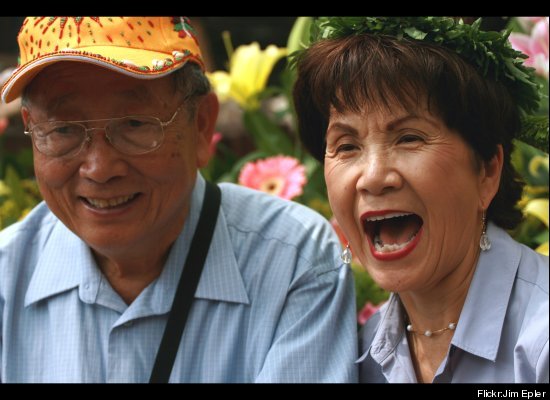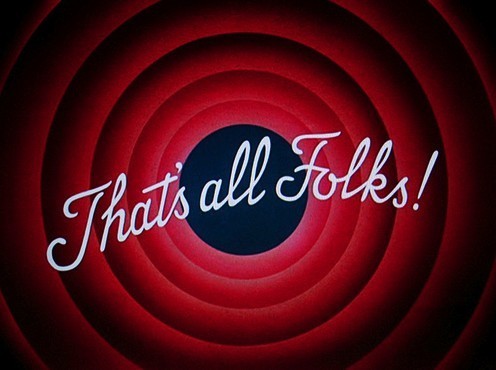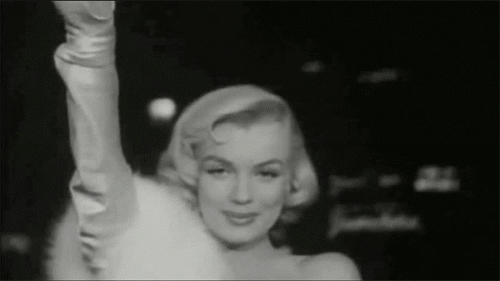
~~~~~~~~~~~~~~~~~~~~~~~~~~~~~~~~~~~~~~~~~~~~~~~~~~~~~~~~~~~~~~~~~~~~~~~~~~~~~~~~~~~~~~McKenna Ink Thesis Editing Service
To add your comments click here.

~~~~~~~~~~~~~~~~~~~~~~~~~~~~~~~~~~~~~~~~~~~~~~~~~~~~~~~~~~~~~~~~~~~~~~~~~~~~~~~~~~~~~~McKenna Ink Thesis Editing Service
~~~~~~~~~~~~~~~~~~~~~~~~~~~~~~~~~~~~~~~~~~~~~~~~~~~~~~~~~~~~~~~~~~~~~~~~~~~~~~~~~~~~~~
To add your comments click here.
Coffee – Brewed in History
- © Neal McKenna
Deep, dark, delicious, aromatic coffee, can you get through a day without it? For 90% of all people in North America coffee is a daily ritual and part-time vice, and that’s been going on for the past three centuries! Did you know that every time you have a cup of coffee, you are enjoying a taste of history? Legend says coffee was discovered in Ethiopia, in or about the year 800 AD. It seems a young shepherd noticed that his sheep and cattle became more energetic after eating the fruits dropped by certain type of cherry tree. Curious, he picked some of the “cherries” and soaked them in water. The resulting beverage had the same energizing effect on him and a whole new morning ritual was begun.
“Ripened coffee fruit looks remarkably like a cherry,” says Ron Pearson, a coffee supplier in Kelowna, BC, Canada. “So there could be some truth in that legend. After it is ripened on the tree and is nice and red, it is picked and, most often, sun-dried to remove the fleshy exterior.” It takes a bushel basket of coffee ‘cherries’ to make one pound of ground coffee. Top coffee growing regions in the world today are Guatemala, Kenya, Tanzania, Jamaica, and Brazil.
Growing over three trillion pounds of coffee each year, Brazil, by far is the largest producer / exporter and second largest consumer of coffee in the entire world. Annual consumption, at 23 million pounds, is second only to the United States. Of course, you have to remember Brazil has only a fraction of the US population. This gives real credence to the lyrics of a mid 1950s Top Ten hit, called “The Coffee Song.” Part of it goes like this: “...a politician’s daughter was accused of drinking water and they fined her one big fifty dollar bill. They drink an awful lot of coffee in Brazil.”
Now, let’s get back to the history lesson. The Arabs are generally believed to be the first to brew coffee; however, it was served cold. When it arrived in Europe, coffee was called “Arabian Wine.” In 1665, the governor of Jamaica, a confirmed java addict, placed an order for “kaughy.” In doing so, he managed to misspell the word “coffee” without using one of the four letters which actually spell it! By the mid 17th century, coffee was served hot and declared the undeniable breakfast of champions throughout Western Europe and the Americas.

Today, most urban and suburban dwellers alike, have their drinking water delivered. However, there is a growing trend toward purchasing in-home counter top reverse osmosis drinking water filter systems. Reverse osmosis involves a series of filters that strain down so low it requires 400 pounds of pressure per square inch to push the water through the filter. The reverse osmosis filter removes any and all particulate matter in the water whether it is mineral or bacteria. However, water that is bottled and subsequently delivered is further purified by exposure to ultraviolet rays. For most drinking water suppliers, the purification and delivery of water remains the largest component of their business.
But here’s a new twist. Many water suppliers are now getting into the coffee business. Obviously, if you have the best water, it makes sense that you’d want to use it to brew the finest in coffee. “The kind of coffee we supply to our customers depends on where it’s being consumed and how much they want to pay,” explains Pearson. “Like all products, there is a low end and a high end to coffee. Restaurants tend to serve more robust, lower end coffees that ‘rev’ customers up. On the other hand, offices are more likely to provide their staff with a milder, mellower, more expensive blend. They don’t want their workers all hyped up, so they select a smooth, higher quality coffee.”
“But it always comes back to the water,” Pearson says emphatically. “You can buy really expensive coffees like Blue Mountain or Kona but if the water is poor quality, you’ve just wasted your money. Good coffee absolutely requires good water.” He grins wryly. “I would suggest bottled water and I promise you, you’ll never brew a bad cup of coffee again.”
Coffee is undeniably an integral part of our daily ritual. It is the drink most often associated with good conversation. However, in times past, not all of it has been entirely friendly. In the early part of the 20th century, Lady Nancy Astor was sharing coffee with Winston Churchill and tempers flared. “If I were your wife,” she said, “I would put poison in your coffee.” Churchill immediately replied: “And if I were your husband, madam, I would drink it!”
What to do with an empty burlap coffee bag...


Gif via Retrogasm
Now, on a completely different tangent, the fear of coffee is called javaphobia. Like all other phobias, it is an irrational and very often, a powerful fear/dislike of something which is of no consequence to most other people. While most of us admit to being coffee addicts, javaphobes cannot bear the smell, taste or even the sight of coffee. As a result, they avoid places where coffee is served – which is just about everywhere. Effectively, those who suffer from javaphobia become recluses. So now, we move on to thrirteen other obscure phobias you'll be glad you don't have. Phobias You've Probably Never Heard Of
Re-blogged from The Huffington Post - Dean Praetorius Posted: 06-30-11 02:59 PM

GELIOPHOBIA - Fear of Laughing
Everyone's heard of a fear of heights or spiders, but what are some of the lesser known phobias? Some of the things plunging people into irrational fear in everyday life truly boggles the mind. Papaphobia for instance is a fear of the Pope while aulophobics are unlikely to play any instruments with an irrational fear of flutes. Then there's geliophobia - a fear of laughing, along with metrophobia - a fear of poems. Everyone is afraid of something, and some people are afraid of everything. They're called Panophobics. While there's a fine line between fears and phobias, there seems to technical distinctions for almost every type of fear. In fact, there's even a term for people who are afraid of being afraid. It's called Phobophobia.
However, some fears are more common than others and seemingly obscure fears tend to set themselves apart. While you can't blame a person for being afraid of skydiving, you may not find to many people who are altogether afraid of gravity. We've put some of our favorites below, but you can always check out phobialist.com, which contains more scientific names for fears than you ever imagined actually existed. For more phobias - click here.
Japanese robot fails to bridge
the 'uncanny valley'
By Olivia Solon
Human-like robots continue to repulse us despite major technological advances making them more realistic than ever before, writes Olivia Solon.
Professor Hiroshi Ishiguro with his 'humanoid' twin.
The closer to human a robot appears to be the more likely it is for people to find it repulsive. The term "uncanny valley" is sometimes used to describe the idea that while we find robots interesting and delightful as they begin to resemble humans, the closer they become to human-like the more the response turns to that of revulsion.
Last month (April 2011) the Advanced Telecommunications Research Institute hosted an extraordinary summit in Nara, Japan. It brought three people together with their robotic doppelgangers, called Geminoids. The inventor of the hyper-realistic humanoids is Professor Hiroshi Ishiguro, who along with Associate Professor Henrik Scharfe and an unnamed female model (bizarrely, she can’t be named to “protect her privacy”) enjoyed an unnerving tea party with their synthetic twins.
Nowhere before has the gaping chasm that is the “uncanny valley” been more evident. Coined by roboticist Masahiro Mori, the “uncanny valley” is a hypothesis that states that while we are initially delighted and intrigued by robots as they become more humanlike, when they become very human-like, our response switches to revulsion. If you plotted human emotional response against the robot’s similarity to humans on a graph, the curve would continue steadily upwards until the droid creeps into Dr Frankeinstein territory, then the graph would nosedive into a disturbing chasm before rebounding to a second peak where resemblance to humanity is complete.
The “valley” therefore describes those robots that fall in the zombie no-man’s-land between “almost human” and “fully human”. So we love C3PO, Asimo and Nao in all their humanoid splendour, but when we replace LED eyes with prosthetic eyeballs and homogeneous, geometric bodywork with twitching faux-flesh we begin to feel perturbed and lose empathy for the robot. Unless you can leapfrog this eerie abyss (something that no one has achieved yet), it’s best to make sure your android is more clearly “machine” than “man.”
You may have also noticed the valley’s effect in films such as The Polar Express, where dead-eyed but anatomically accurate avatars based on the likes of Tom Hanks added unsettling creep factor to a supposedly child-friendly animation. In robotics terms, you don’t get much more uncanny than the Geminoids: exquisitely crafted clones that are given away by mechanical subtleties that ensure that they fall short of perfectly mimicking their human archetypes by a few degrees – the way the artificial skin moves over the robots’ underlying structure; the waxy, corpse-like hands; the elasticity of the lips as they morph around staccato mouth-twitches, and the laboured blinking of latex eyelids.
A number of different theories have been posited to explain the cognitive mechanism behind the valley. One suggests that we compare uncanny robots against their human archetypes as opposed fellow robots, as such we are less forgiving and the nonhuman characteristics of the droid become more obvious, leading to a sense of strangeness. Other theories suggest that it is caused by an evolutionary avoidance of pathogens – i.e. the same reaction we have when we see a corpse or a diseased person – or an evocation of an innate fear of death.
The valley is not without its critics and remains a largely untested hypothesis. But Princeton researchers in 2009 examined the phenomenon by showing monkeys three different images of monkey faces – one photo of a monkey, one uncanny rendering and a cartoonish face. The monkeys seemed to prefer looking at the photo and the unrealistic face, which was interpreted as a sign that they found the uncanny rendering unpleasant – supporting an evolutionary explanation for the valley.
Games designers are particularly keen to cross the valley – unintentionally creepy CGI characters can disrupt plotlines, especially when gaming is becoming increasingly cinematic. Rockstar’s LA Noire has come the closest to bridging the valley, thanks to motion-capture technology used to make the film Avatar that picks up on subtleties of expression.
However, robiticists have a tougher challenge – they are not just limited by people’s ability to replicate human expression in 3D renderings, but by the use of synthetic materials to mimic biological structures. Technology and materials will evolve and roboticists will span the valley, but in the meantime we will be repulsed by an army of uncanny humanoids.
Major advances in CGI
Meet Emily – the most lifelike
animated actress ever made.

Now 80 years later industry experts are hailing Image Metrics for making the most realistic computer generated character so far.
‘Emily’ is an extraordinary animated woman created using a ground-breaking modelling technique that captures minute facial movements.
Her real life counterpart is American actress Emily O’Brien, star of American soap opera The Young and the Restless.
Firstly a computer generated replica was made of Emily by the University of Southern California Institute for Creative Technologies who was a partner in the project.
The actress then sat inside a sphere of LED lights while she was photographed making 35 different poses.
The light patterns allowed the shine of her skin to be captured independently from her main skin tone, with hundreds of measurements taken for each millimetre.
The CG models provide unprecedented detail of natural facial expressions – down to skin pores and fine wrinkles,’ a spokesman said.
Emily is considered to have avoided ‘uncanny valley’ – in which animation looks less realistic as it approaches human likeness.
Emily was then animated by Image Metrics, a company that makes computer-generated imagery for Hollywood films and computer games.
They filmed Ms O’Brien giving a 90-second performance using computer vision technology, which captured the footage pixel by pixel.
The team then applied this to the computer-generated character – a process that only took one week.
Emily O’Brien and her animated self made their worldwide debut at Siggraph 2008, an International Conference on Computer Graphics, in Los Angeles this month.
‘Our goal was to create a completely convincing, animated computer-generated face,’ David Barton, Image Metrics’ producer said.
‘We have created new levels of believability in facial animation.’
New modelling technology, pioneered by California-based company Image Metrics, now enables the most minute details of a facial expression to be captured and recreated. This means a long-standing barrier known as the 'uncanny valley' - the perception that animation looks less realistic as it approaches human likeness - may soon be crossed. An example of this new technology can be seen in the video below, which shows an entirely computer-generated woman called "Emily." Researches believe the line between what appears real and what is merely rendered may be blurred completely by 2020.
Re-blogged from The Daily Mail
To add your comments click on Links to this post here or below. It will take you to a stand-alone copy of this page. At the bottom you'll find the comments box, so feel free to let 'er rip.





No comments:
Post a Comment